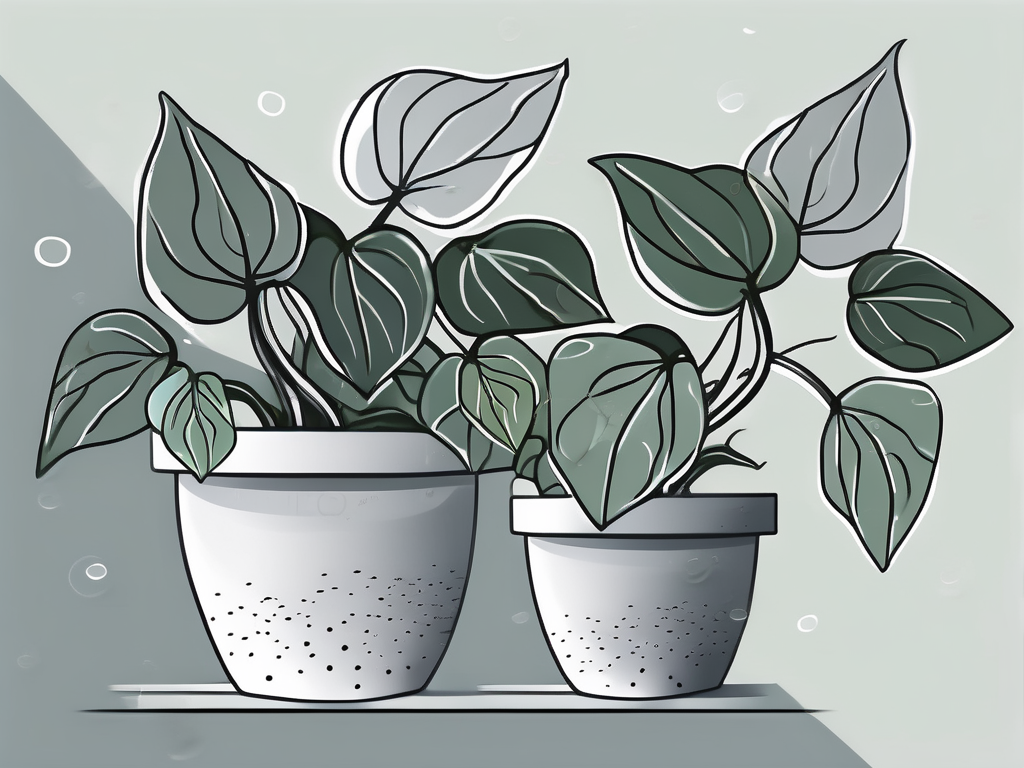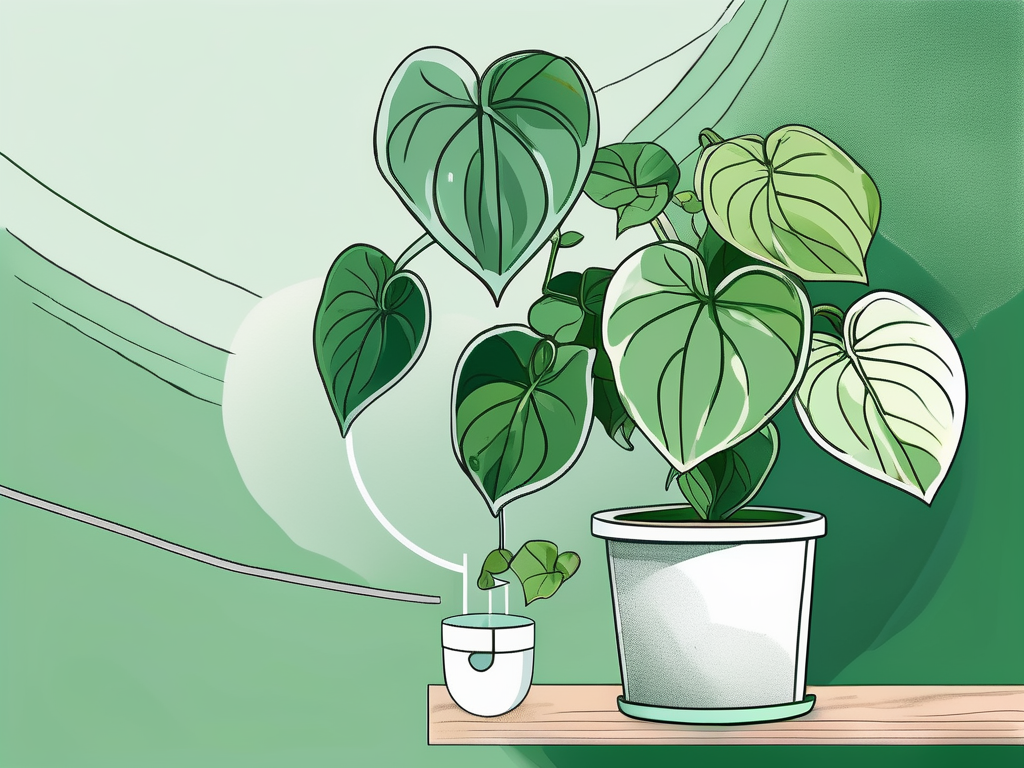
If you're someone who loves plants but isn't exactly blessed with a green thumb, the Golden Pothos might just be your new best friend. Known for its vibrant, heart-shaped leaves and forgiving nature, this plant has become a favorite among houseplant lovers worldwide. It's not only a breeze to care for, but it's also a fantastic way to add a touch of greenery to any room.
In this article, we'll take a comprehensive look at everything you need to know about caring for your Golden Pothos. From watering and sunlight requirements to dealing with pests and incorporating this versatile plant into your interior design, we've got you covered. So, let's get started!
Understanding the Golden Pothos
Before we jump into the nitty-gritty of caring for Golden Pothos, it's good to know a bit about the plant itself. Native to the Solomon Islands, the Golden Pothos (Epipremnum aureum) is a hardy, trailing vine. It's often referred to as "Devil's Ivy" because it's nearly impossible to kill and stays green even when kept in the dark.
One of the standout features of the Golden Pothos is its ability to purify the air. NASA's Clean Air Study found that this plant can remove toxins like formaldehyde and benzene from the air, making it not just a decorative addition but also a functional one. Whether you're a novice plant parent or a seasoned pro, this plant's resilience and beauty make it a must-have in any home.
Interestingly enough, the Golden Pothos is also known for its fast growth rate. Under the right conditions, it can grow several feet in just a few months, creating a lush, cascading effect that's perfect for hanging baskets or training along a trellis. Now that we've got a bit of background, let's move on to the specifics of how to keep your Golden Pothos thriving.
Finding the Perfect Spot
One of the first things to consider when bringing a Golden Pothos into your home is where to place it. This plant isn't too fussy about light, but finding the right spot can make a big difference in its growth and appearance.
Golden Pothos thrives in bright, indirect sunlight. Think of a spot that gets plenty of light but isn't directly exposed to the sun's harsh rays. Direct sunlight can scorch the leaves, causing them to turn a pale yellow or even brown. On the other hand, too little light can lead to sluggish growth and less vibrant foliage.
If you're unsure about the lighting in a particular spot, a good rule of thumb is to check the shadows. If the shadows are soft and diffuse, it's likely a good spot for your Pothos. However, if the shadows are sharp and well-defined, you might want to find a slightly shadier location.
Of course, if natural light is hard to come by in your home, don't fret! Golden Pothos can also adapt to low-light conditions, although its growth might slow down a bit. Just keep an eye on the leaf color, and if they start to look a bit lackluster, consider moving your plant to a brighter location.
Watering Wisely
One of the biggest mistakes new plant parents make is overwatering. It's easy to assume that more water equals a happier plant, but that's not always the case. With Golden Pothos, less is often more.
When it comes to watering, the key is to let the top inch of soil dry out between waterings. This usually means watering your Pothos every 1-2 weeks, but it's always best to check the soil moisture level first. Stick your finger into the soil up to the first knuckle – if it feels dry, it's time to water. If it's still damp, give it a few more days.
Keep in mind that the watering schedule can vary depending on factors like temperature and humidity. During the warmer months, your Pothos might need more frequent watering, while in the cooler months, you can scale back a bit. Always use room-temperature water to avoid shocking the plant's roots.
If you're prone to underwatering or overwatering, consider investing in a moisture meter. It's a handy tool that takes the guesswork out of watering and helps you keep your Pothos happy and healthy. Remember, it's better to underwater than overwater, as this plant is more tolerant of dry conditions than soggy soil.
Choosing the Right Soil
Golden Pothos isn't overly picky about its soil, but providing the right mix can support optimal growth. Ideally, you'll want a well-draining potting mix to prevent water from sitting in the pot, which can lead to root rot.
A standard houseplant potting mix will usually do the trick, but you can enhance it by adding a bit of perlite or orchid bark to improve aeration. This is particularly important if you tend to overwater, as these amendments help excess water drain away quickly.
If you prefer making your own mix, try combining equal parts potting soil, perlite, and coconut coir. This blend ensures that the soil retains some moisture while still allowing proper drainage. Plus, the coconut coir provides some extra aeration and helps keep the soil structure light and fluffy.
When repotting, choose a pot with drainage holes to prevent water from accumulating at the bottom. Terracotta pots are a great choice because they help wick moisture away from the soil, reducing the risk of overwatering. Just be sure to check the soil regularly, as terracotta can dry out more quickly than plastic or ceramic pots.
Feeding Your Pothos
While Golden Pothos isn't a heavy feeder, a little extra nutrition can go a long way toward encouraging lush growth. Fertilizing during the growing season (spring and summer) can help your plant reach its full potential.
A balanced, water-soluble fertilizer diluted to half strength is ideal for feeding your Pothos. You can apply it once a month during the growing season, but be sure to skip feeding in the fall and winter when the plant's growth naturally slows down.
It's important to avoid over-fertilizing, as this can lead to salt buildup in the soil and damage the roots. If you notice a white crust on the surface of the soil, it's a sign that you've been using too much fertilizer. In this case, flush the soil with water to wash away the excess salts.
Another option for feeding your Pothos is to use compost or worm castings. These organic options provide slow-release nutrients and help improve soil structure. Simply mix a small amount into the top layer of soil every few months to keep your plant happy and healthy.
Dealing with Pests and Diseases
Golden Pothos is generally a resilient plant, but like any houseplant, it can occasionally face pest and disease issues. The most common pests you'll encounter are spider mites, mealybugs, and aphids.
Spider mites are tiny, almost invisible pests that can cause yellowing and webbing on the leaves. Mealybugs appear as white, cottony masses on the stems and leaves. Aphids, on the other hand, are small, green insects that cluster on new growth.
To deal with these pests, you can start by wiping down the leaves with a damp cloth to remove them physically. For more persistent infestations, consider using insecticidal soap or neem oil. Be sure to follow the instructions on the label and test a small area of the plant first to ensure it doesn't cause any damage.
As for diseases, root rot is the most common issue, usually caused by overwatering. If you notice yellowing leaves and a foul smell coming from the soil, it's time to check the roots. Healthy roots should be firm and white, while rotting roots will appear brown and mushy. If root rot is present, trim away the affected roots and repot the plant in fresh soil.
Regularly inspecting your plant and maintaining proper care practices can help prevent most pest and disease issues. Remember, a healthy plant is the best defense against unwanted invaders.
Propagating Your Golden Pothos
One of the most rewarding aspects of caring for Golden Pothos is how easily it can be propagated. Whether you want to expand your collection or share the plant love with friends, propagation is a fun and straightforward process.
The easiest method for propagating Pothos is through stem cuttings. Here's a step-by-step guide to get you started:
- Choose a healthy vine with several leaves and snip a 4-6 inch section just below a node (the point where a leaf is attached).
- Remove the lower leaves, leaving a few at the top.
- Place the cutting in a glass of water, ensuring that the nodes are submerged but the leaves are above the waterline.
- Change the water every few days to keep it fresh and prevent bacterial growth.
- Once the roots are 1-2 inches long, usually within 3-4 weeks, you can transfer the cutting to soil.
Alternatively, you can propagate directly in soil by planting the cutting in a pot filled with moistened potting mix. Keep the soil consistently damp until the roots establish, and then care for it as you would a mature Pothos.
Propagation is not only a great way to multiply your plants but also an opportunity to rejuvenate an older, leggy Pothos. Simply trim back the longer vines, and use those cuttings for propagation. It's a win-win situation!
Incorporating Golden Pothos into Your Space
Golden Pothos is not just a plant; it's a versatile design element that can bring life and vibrancy to any room. Thanks to its trailing vines and vibrant leaves, it can be used in various ways to complement your interior design.
Here are a few ideas to get you started:
- Hanging Baskets: Let the vines cascade down from a hanging basket, creating a beautiful green curtain. This is perfect for small spaces or to add interest to a corner of the room.
- Bookshelves: Place a Pothos on a shelf and let the vines trail down. It adds a touch of nature to your library and softens the lines of a bookcase.
- Wall Planters: Use wall-mounted planters to create a living wall effect. This works well in areas with limited floor space and creates a stunning visual display.
- Macramé Hangers: Pair your Pothos with a macramé hanger for a boho-chic vibe. Hang it near a window for a sun-dappled effect that's sure to catch the eye.
Regardless of how you choose to display your Pothos, remember that its vibrant green leaves are its best feature. Allow them to shine by pairing them with neutral colors and natural textures like wood and woven fabrics. This creates a harmonious and inviting environment that highlights the beauty of your plant.
Common Challenges and How to Overcome Them
While Golden Pothos is generally easygoing, you might encounter a few challenges along the way. Here are some common issues and how to address them:
- Yellow Leaves: This can result from overwatering, underwatering, or insufficient light. Check your watering schedule and adjust the light exposure to remedy the issue.
- Leggy Growth: If your Pothos becomes spindly, it's likely not receiving enough light. Move it to a brighter location and trim back the longer vines to promote bushier growth.
- Brown Leaf Tips: This often indicates low humidity or over-fertilization. Increase humidity by placing a humidifier nearby or misting the leaves, and ensure you're not over-fertilizing.
By paying attention to your plant's needs and making small adjustments, you can keep your Golden Pothos thriving for years to come. Remember, plants are living creatures with their own preferences and quirks, so it's okay if things aren't perfect all the time. The learning process is part of the joy of plant care.
Final Thoughts
The Golden Pothos is a wonderful addition to any home, offering beauty and air-purifying benefits with minimal effort. By understanding its needs and incorporating it into your decor, you can enjoy this resilient plant for years to come.
At Cafe Planta, we're passionate about helping people connect with nature through plants. Whether you're looking for new plant additions, care tips, or plant-themed apparel, we've got something for everyone. If you have questions or just want to chat about plants, feel free to email us or send a message through our Instagram. We're excited to be part of your plant journey!
























